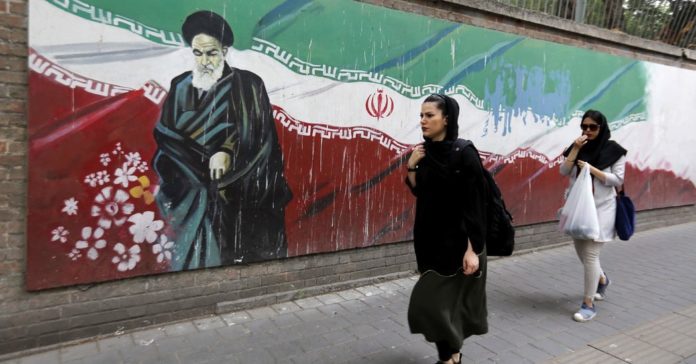Whether that proves to be accurate or overwrought, it is clearly an example of Middle East brinkmanship that runs counter to what President Barack Obama intended when the nuclear deal was struck in July 2015 between John Kerry, then the secretary of state, and Foreign Minister Mohammad Javad Zarif of Iran.
Mr. Obama’s gamble in that deal — the signature foreign policy accord of his eight years in office — was straightforward. He regarded Iran as a potentially a more natural ally of the United States than many of its Sunni-dominant neighbors, with a young, educated Western-oriented population that is tired of being ruled by an aging theocracy.
By taking the prospect of nuclear weapons off the table, Mr. Obama and Mr. Kerry had argued, the two countries could over time chip away at three decades of hostility, and work on common projects, starting with the defeat of the Islamic State.
It didn’t turn out that way. While the deal succeeded in getting 97 percent of Iran’s nuclear material out of the country, Iran’s conservatives and its military recoiled at the idea of cooperating on any projects with the West.
Months before it became clear that Mr. Trump had a decent shot at being elected, the Iranian military boosted its support for President Bashar al-Assad in Syria; it expanded its influence in Iraq and accelerated its support for terror groups. And it doubled down on deploying cyber attacks against targets in the West and in Saudi Arabia, embracing a weapon that was not covered by the nuclear accord.
Watch: President Trump Withdraws U.S. From Iran Deal
The president called the nuclear agreement a “horrible one-sided deal that should have never, ever been made.”
By THE ASSOCIATED PRESS.
Photo by Doug Mills/The New York Times.
Watch in Times Video »
Then came Mr. Trump, with his declaration that the deal was a “disaster” and his vow to blow it up.
[Read our coverage of Mr. Trump’s decision and his announcement.]
Now, suddenly, the world may well be headed back to where it was in 2012: On a road to uncertain confrontation, with “very little evidence of a Plan B,” as Boris Johnson, the British foreign minister, said on a visit here.
Exiting the deal, with or without a plan, is fine with the Saudis. They see the accord as a dangerous distraction from the real problem of confronting Iran around the region — a problem that the Saudis believe will be solved only by regime change in Iran. They have an ally in John R. Bolton, the president’s new national security adviser, who shares that view.
Israel is a more complicated case. Prime Minister Benjamin Netanyahu has pressed Mr. Trump to abandon an arrangement that he has always detested. But Mr. Netanyahu’s own military and intelligence advisers say Israel is far safer with an Iran whose pathway to a bomb is blocked, rather than one that is once again pursuing the ultimate weapon.
As a last-minute lure to convince Mr. Trump to pull the plug on the Iran deal, Mr. Netanyahu last week released Iranian documents, stolen from Tehran in January, that proved what Western intelligence agencies long knew: A decade ago or even longer, the Iranians were working hard to design a nuclear warhead.
To Mr. Netanyahu, this was proof that Iran could never be trusted and that it had reached the nuclear deal under false pretenses by pretending it never had a weapons program.
To Mr. Trump and his allies, the Israeli discovery said less about Iranian nuclear capability than it did about Iranian perfidy.
Given evidence that Iran was preserving its bomb designs as a hedge for the future, the discovery suggested Iran has not given up its ambitions.
As former Middle East negotiator Dennis Ross put it, someone needed to address the Israeli discovery “lest they give the Iranians the ability to pick up quickly where they left off on weaponizing.”
“And, given the danger that Iran would have the ability to move rapidly to a weapon in the year 2030,” when the limits on enrichment are removed, “the sunset issue needs to be addressed,” said Mr. Ross, who was part of the Obama administration’s first term, before the negotiations on the Iran deal began to take shape.
At the core of Mr. Trump’s announcement on Tuesday is a conviction that Iran can never be allowed to accumulate enough material to assemble a bomb. When the Europeans said that would require reopening the negotiations, Mr. Trump balked, and decided instead to blow up the entire deal.
It was a classic Trumpian move, akin to the days when he would knock down New York buildings to make way for visions of grander, more glorious edifices. But in this case, it is about upsetting a global power balance and weakening a regime that Mr. Trump has argued, since he began campaigning, must go.
Source : Nytimes













